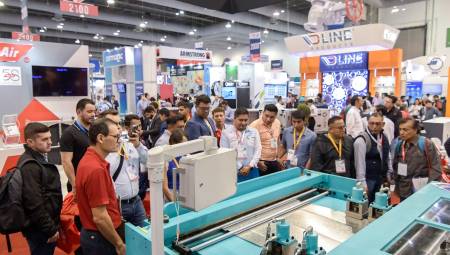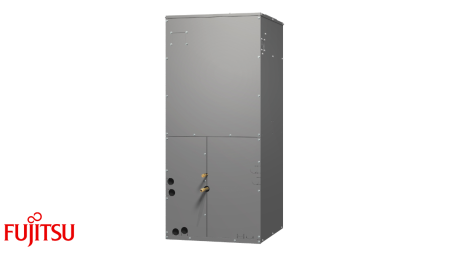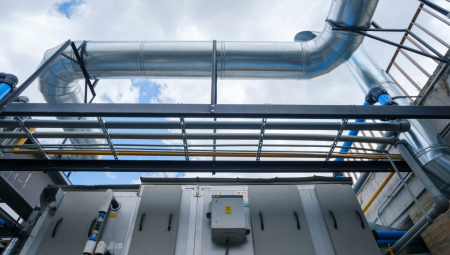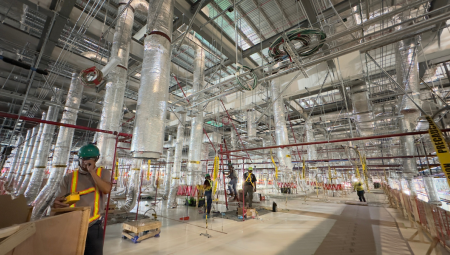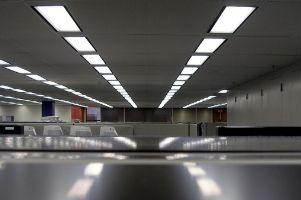 Bipolar Ionization technology using the Indoor Air Quality (IAQP) procedure under the ASHRAE 62.1 2010 standard will allow points to be achieved to achieve LEED certification.
Bipolar Ionization technology using the Indoor Air Quality (IAQP) procedure under the ASHRAE 62.1 2010 standard will allow points to be achieved to achieve LEED certification.
by Saúl Campuzano*
Modern buildings are becoming more energy efficient, but less healthy for those who occupy them. This applies especially to buildings for commercial purposes. Those who design these constructions seek to increase the recirculation of indoor air and reduce the renewal of fresh air, resulting in a considerable deterioration of indoor air quality (IAQ) and in turn the well-being of the occupants, who must breathe unhealthy air.
The successful English entrepreneur Richard Branson has already said it: "Customers are not first, employees come first, if you take care of them, they will take care of your customers." The best way to take care of employees is to offer them a healthy work environment, starting with ensuring good quality air. This, without a doubt, has an impact on their quality of life, which at the same time translates into good performance and, therefore, into more satisfactory results for all the company's stakeholders.
Offering pure air is an excellent business for any company, since it is proven that inhaling good quality air increases work efficiency and, among other things, reduces absenteeism due to illness. In addition, it is proven that polluted air increases the stress and irritability of those who breathe it, deteriorating the work environment and the relationship with customers and suppliers.
The ideal, therefore, is the combination of methods to renew and purify the air and thus offer high quality environments for the benefit of those who live in closed or relatively enclosed spaces, especially for those who must inhabit the same work area for long working hours. The main purpose of air renewal is to dilute pollutants and provide the oxygen needed for the respiration of all occupants. The goal of purification is to offer air as clean as that of a natural forest.
How can I get good quality air?
The ASHRAE 62.1 standard "Ventilation for Acceptable Indoor Air Quality (IAQ)" gives us a number of tools that allow us to specify minimum ventilation rates and other measures aimed at providing adequate indoor air quality that is acceptable to human occupants of a building, and also minimize adverse health effects. This standard can be applied to new or existing buildings. It is important to emphasize that compliance with this standard is a prerequisite for any credit within the LEED certification.
The tools are as follows:
- Ventilation Rate Procedure (VRP). The rate of outside air is determined based on the type of space, application, occupancy level, and area.
- Natural Ventilation Procedure (NVP). Opening zones are established for the natural entry of fresh air and requires a mechanical ventilation system in most climates; it is considered a mixed ventilation system.
- IAQ Procedure (IAQP). It requires a contaminant analysis, based on sources and concentration target to find the minimum rate of outside air.
Which tool is the most cost-efficient?
The Ventilation Rate Procedure (VRP) tool is the most used by modern construction designers, due to the practicality to interpret the parameters established in the standard. However, depending on the application, the rate of outdoor air required to obtain good quality air is usually very high, even more so in places with high temperatures. This results in the increase of the air conditioning system and, therefore, of the economic investment. Likewise, energy consumption and other costs associated with air cooling (maintenance, consumables, among others) are considerably high.
On the other hand, the Natural Ventilation Procedure (NVP) is a less used tool than the VRP, since it requires special natural conditions for optimal performance.
Finally, the IAQ Procedure (IAQP) is a very little used method, because it requires a significant investment of time and significant judgment on the part of designers, however it is a tool that allows quite representative savings, mainly in installed capacity and energy consumption. The IAQP tool determines the minimum rate of outside air, allowing the recirculation of a high percentage of air, which must be free of organic and inorganic pollutants, which are stipulated in the standard.
For the control of pollutants it is essential to have an air purification system with the ability to inactivate the harmful effects on health and, at the same time, can enrich the air.
Bipolar ionization applied in IAQP
Of German origin, Bioclimatic bipolar ionization is a clean technology that simulates the natural phenomenon of air purification in the same way that happens in thunderstorms, waterfalls (waterfalls) or just where the waves burst against the beach. Bioclimatic bipolar ionization works with a series of glass tubes with special characteristics attached to a voltage transformer, which are subjected to discharges ranging between 1,500 and 3,000 volts, transforming the air (98% nitrogen and oxygen) into active oxygen (bipolar oxygen ions, oxygen radicals, hydroxyl radicals and a small ozone formation) which efficiently inactivates viruses, bacteria, molds and yeasts, as well as gases such as ammonium, methane, propane, benzene, among others.
Bioclimatic bipolar ionization is an indispensable complement to the application of IAQP, thanks to the fact that it is able to inactivate a high percentage of the contaminants required by the ASHRAE 62.1 standard. Additionally, it produces more than 23,000 bipolar ions of oxygen per cubic centimeter of air supplied. Simply put, this technology guarantees an enriched and healthy air similar to the air we breathe in a natural forest (15,000 ions), without the need to take in much outside air.
It is very important to know how to identify the different bipolar ionization technologies, which guarantees the inactivation of organic and inorganic pollutants, and which is capable of producing more than 23,000 bipolar ions of oxygen per cubic centimeter of air. Otherwise, the purpose of acceptable ventilation using the IAQP will not be met, which would require the use of alternative tools in order to meet established standards and thus obtain LEED certification.
The implementation of Bioclimatic bipolar ionization can reduce installed capacity and energy consumption by up to 50%. This contributes significantly to scoring points for LEED certification, which requires certain standards with respect to energy savings and indoor air quality. This saving could be more noticeable in spaces with high occupancy (such as shopping centers) and with high temperatures, especially during summers in seasonal countries and throughout the year in the hot land of the intertropical zone.
In conclusion, we can affirm that the most cost-efficient tool to determine ventilation for acceptable indoor air quality is iaQP using Bioclimatic bipolar ionization technology.
*Saúl Campuzano is the director of the company Ecovivir – Bioclimátic Colombia. You can be contacted at the email [email protected] – www.bioclimatic.com.co







